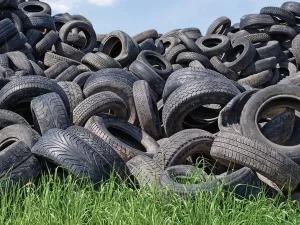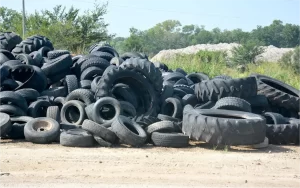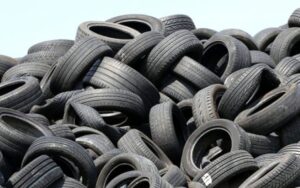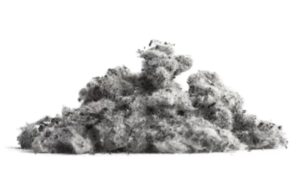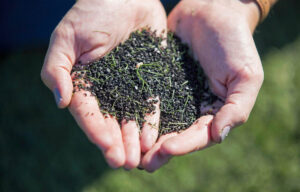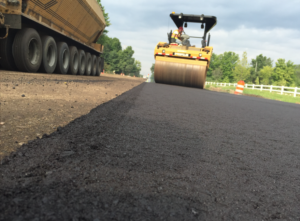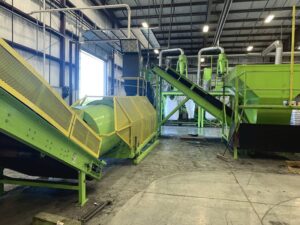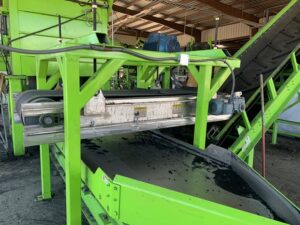
The National Highway System, spanning 160,000 miles of paved highways and featuring over 128,000 overpasses, bridges, and structures, is an integral part of our daily commute. However, a significant portion of these roads, originally paved in the 1960s and ’70s, faces the inevitable need for repair or replacement due to the finite lifespan of asphalt paving.
While the recycling of many materials used in this infrastructure is feasible for upgrade projects, additional materials are essential. Fortunately, the incorporation of repurposed materials from other sources can significantly reduce the environmental impact. Rubberized asphalt, a notable material in this regard, is gaining popularity for its capability to contribute to the construction of stronger and more durable roads for the future.
Florida Tire Recycling Plant plays a pivotal role in this process by contributing to the supply of recycled rubber, a key component in the production of rubberized asphalt. Through tire recycling, the plant provides a sustainable source of rubber that can be effectively utilized in the asphalt mixture, enhancing the road’s resilience and longevity. This not only addresses the infrastructure needs but also aligns with environmentally conscious practices, showcasing how tire recycling facilities like Florida Tire Recycling Plant can play a crucial role in promoting sustainable infrastructure development.
What is rubberized asphalt?
Rubberized asphalt, a paving material comprising crumb rubber, serves as both a binder and an aggregate. A significant quantity of crumb rubber, generated from the recycling of twelve million tires annually, contributes to rubberized asphalt, making it the largest market for crumb rubber in the United States. Waste tire recycling plants play a crucial role in producing this crumb rubber by initially cutting tires into smaller pieces through primary shredders, separating steel wire and fibers from the rubber.
The crumb rubber undergoes further breakdown through either ambient grinding or cryogenic fracturing. Ambient grinding, the preferred method for rubberized asphalt production, results in rough-textured crumbs, maximizing surface area and enhancing their reactivity with asphalt binders.
Florida Tire Recycling Plant actively contributes to the production of crumb rubber, a vital component of rubberized asphalt. By recycling tires and providing a sustainable source of crumb rubber, the plant supports the development of eco-friendly and durable road construction materials.
How did recycled rubber become road material?
In the 1960s, a materials engineer in Phoenix, Arizona named Charles McDonald worked on developing a better way to patch surface damage in the streets. He experimented with sealing cracks and filling holes using recycled tire rubber and aggregate. While some of his “recipes” worked better than others, he was determined to find a solution. When he finally figured out how to make this combination of materials work, residents were astonished at how long these patches lasted. These patches had the added benefit of cutting back on road noise as well.
In 1991, the Intermodal Surface Transportation Efficiency Act (ISTEA) set a standard for the amount of crumb rubber used in asphalt to take effect at the beginning of the 1994 paving season. However, this legislation was short-lived. The mandate was lifted just one year later, in 1995. Not all states abandoned the idea, though. Some states, such as Florida, Arizona, Rhode Island, and Texas, continued to develop and refine methods for used recycled tire rubber in their paving projects.
Why use rubberized asphalt instead of traditional asphalt?
Although rubberized asphalt was developed initially as a way to make road patches last longer, recent studies have shown that it comes with many more benefits.
- Noise Reduction – As noted in the study done in Arizona, cars produce less noise when driving on rubberized asphalt. The rubber creates a more porous and flexible road surface that dissipates the vehicle’s sound instead of reflecting it outwards the way hard surfaces do.
- Greater Longevity – One of the first properties of rubberized asphalt observed was that patches made from this type of material lasted much longer than previously used asphalt. More recent case studies on the topic show that it can last up to 50% longer and resists cracking.
- More Economical – Paving a road with rubberized asphalt requires less raw materials, as it can be thinner and still handle the same volume of traffic. The reduction in initial materials cost combined with a decrease in repairs makes rubberized concrete cheaper to build and maintain.
- Increased Safety – Rubberized asphalt is darker in color. Road markings stand out better against this dark road surface, making night driving easier. Studies have shown that the added crumb rubber gives drivers better traction and reduces skidding as well.
- Environmentally Beneficial – Using scrap tires to pave our roads is a responsible way to re-use the masses of rubber that would otherwise be discarded every year. Resurfacing a road with two-inch-thick rubberized asphalt uses 2,000 scrap tires per lane per mile. It doesn’t take a large project to make a measurable dent in our overly large sized problem. For example, California alone produces 40 million tires per year. 75% of those can be diverted away from landfills into this type of construction project.
Although most rubberized asphalt projects currently underway in the United States are taking place in warmer states, the practice is catching on elsewhere. States like Colorado and Washington are adopting the methods and techniques used elsewhere to see if they can overcome the challenges associated with mixing, laying, and compacting this material on their roads. It is only a matter of time before we are literally driving on tires wherever we go.

